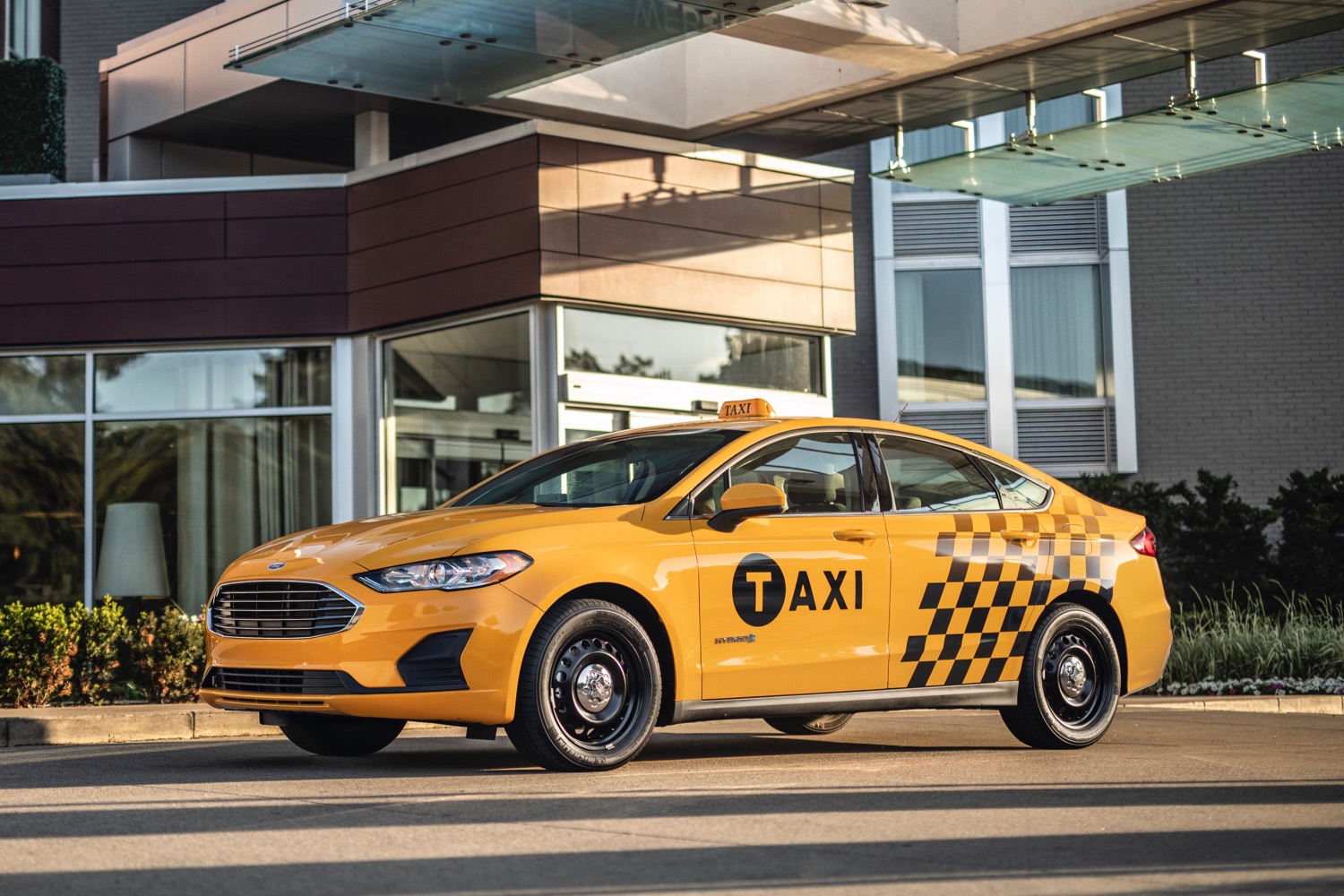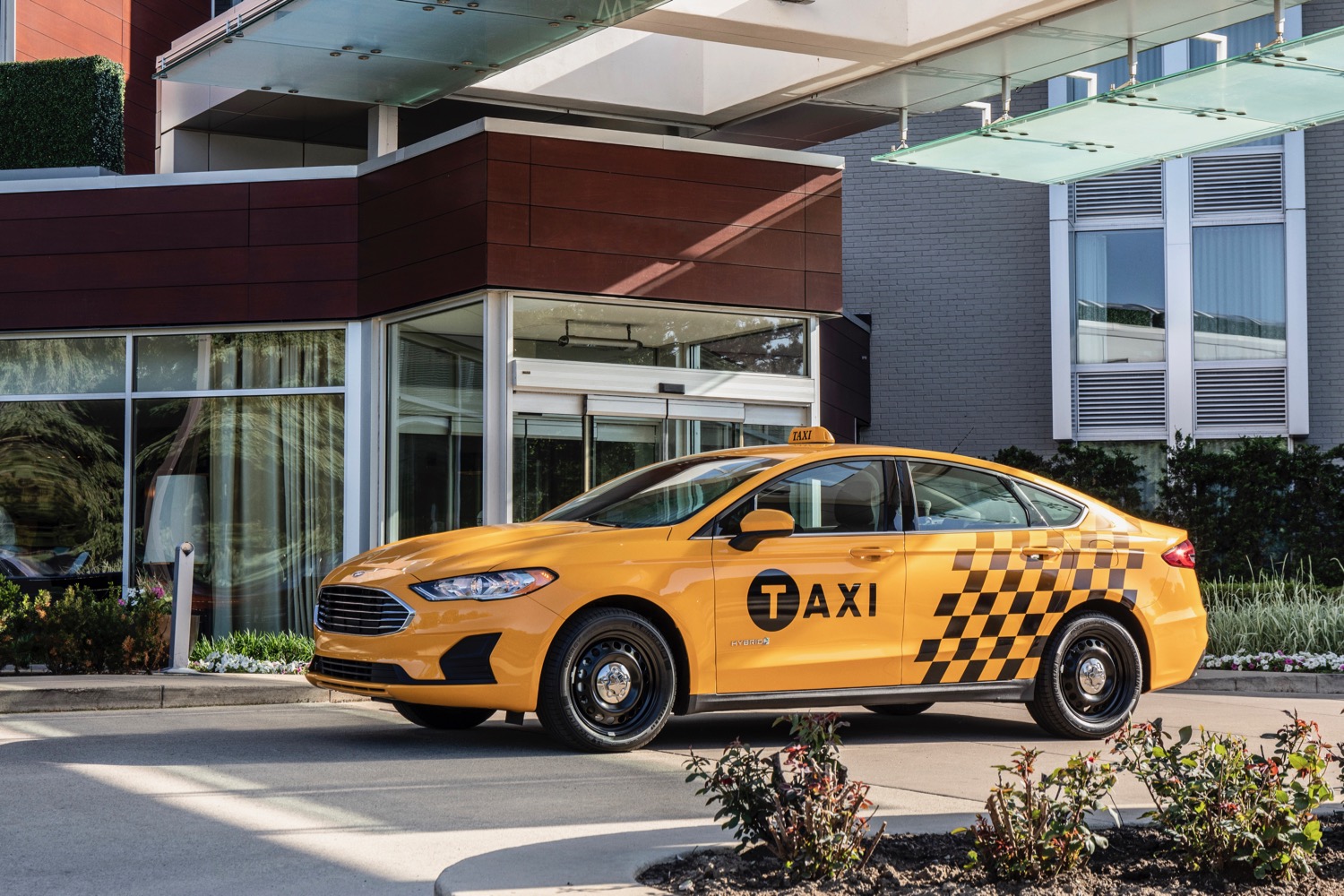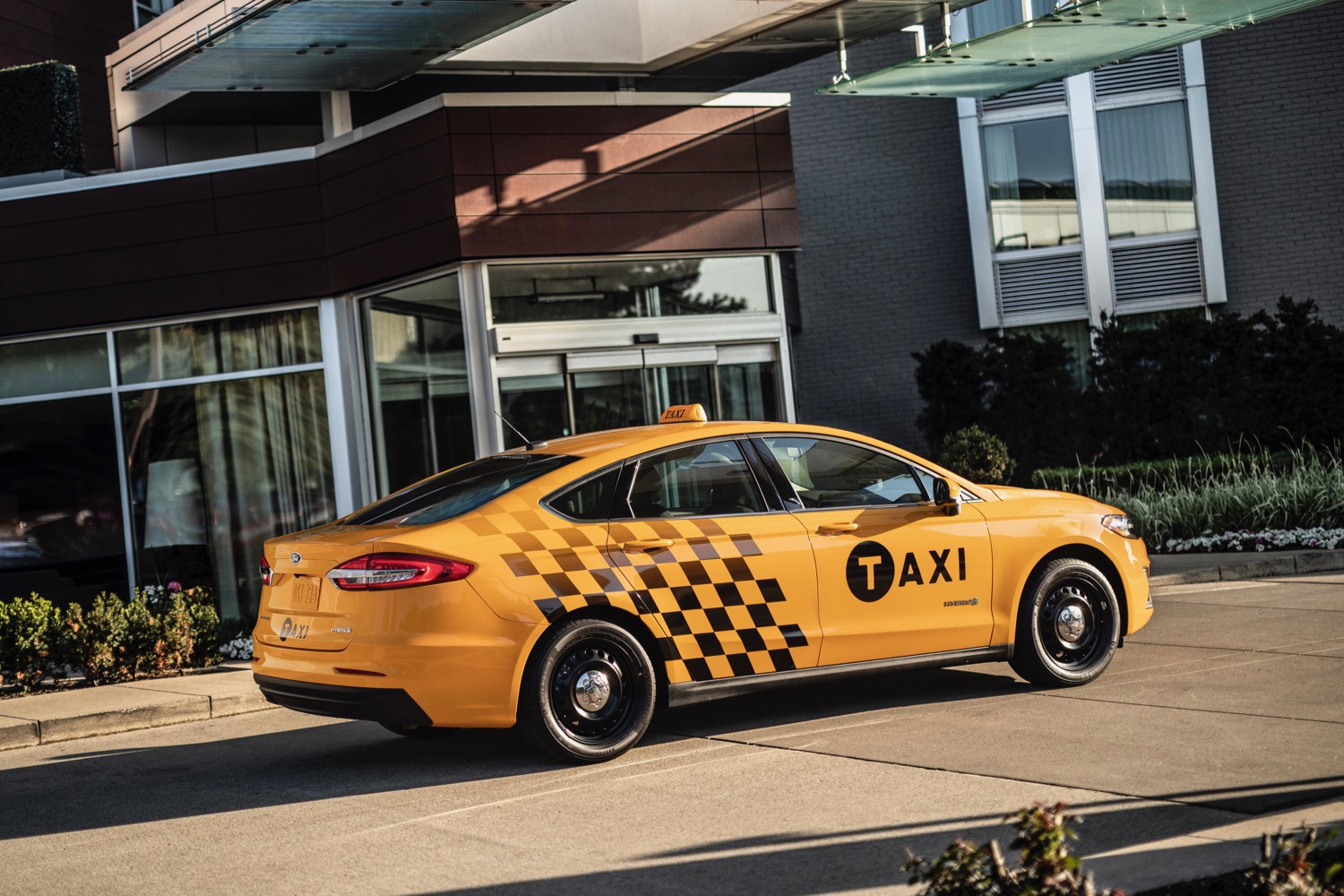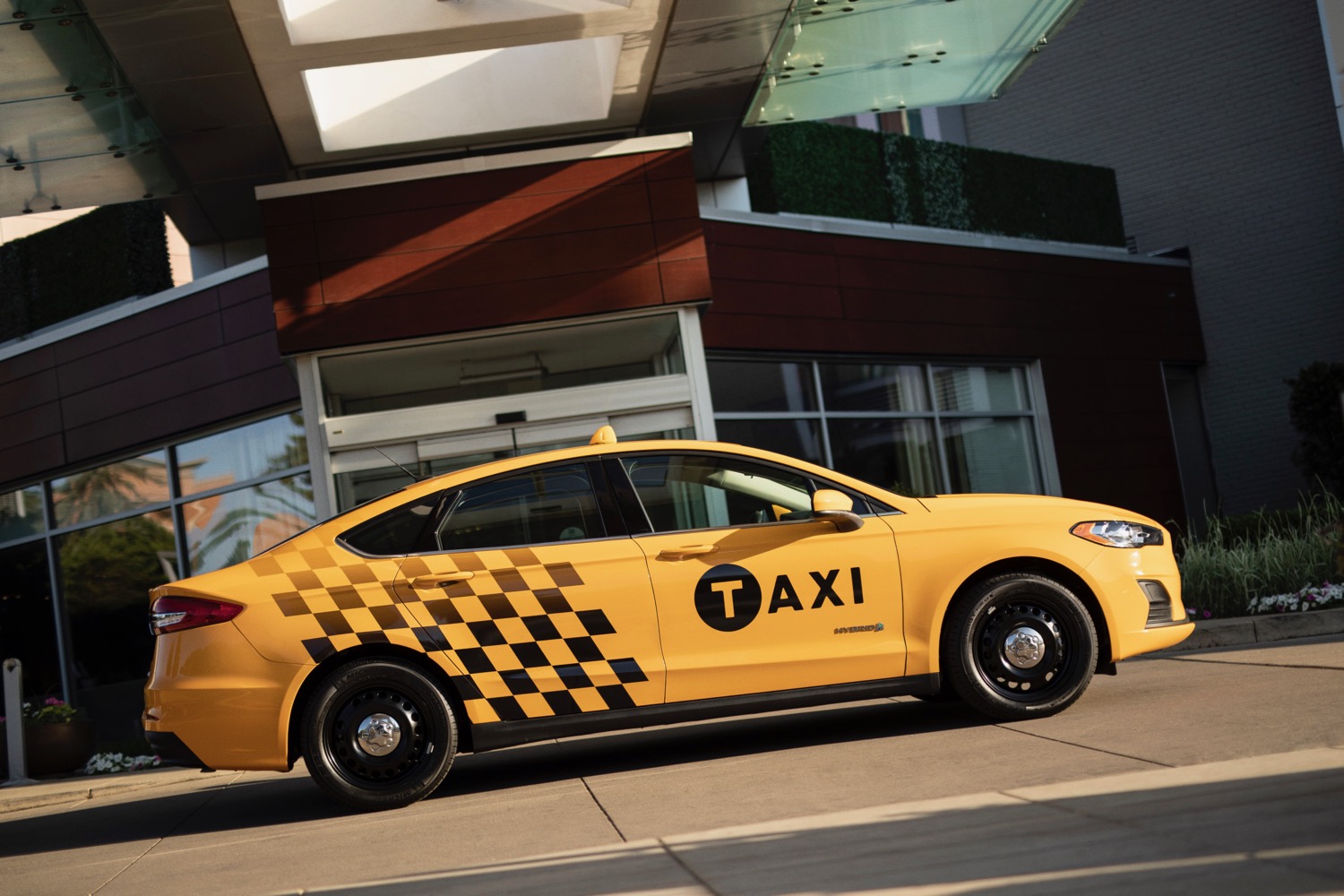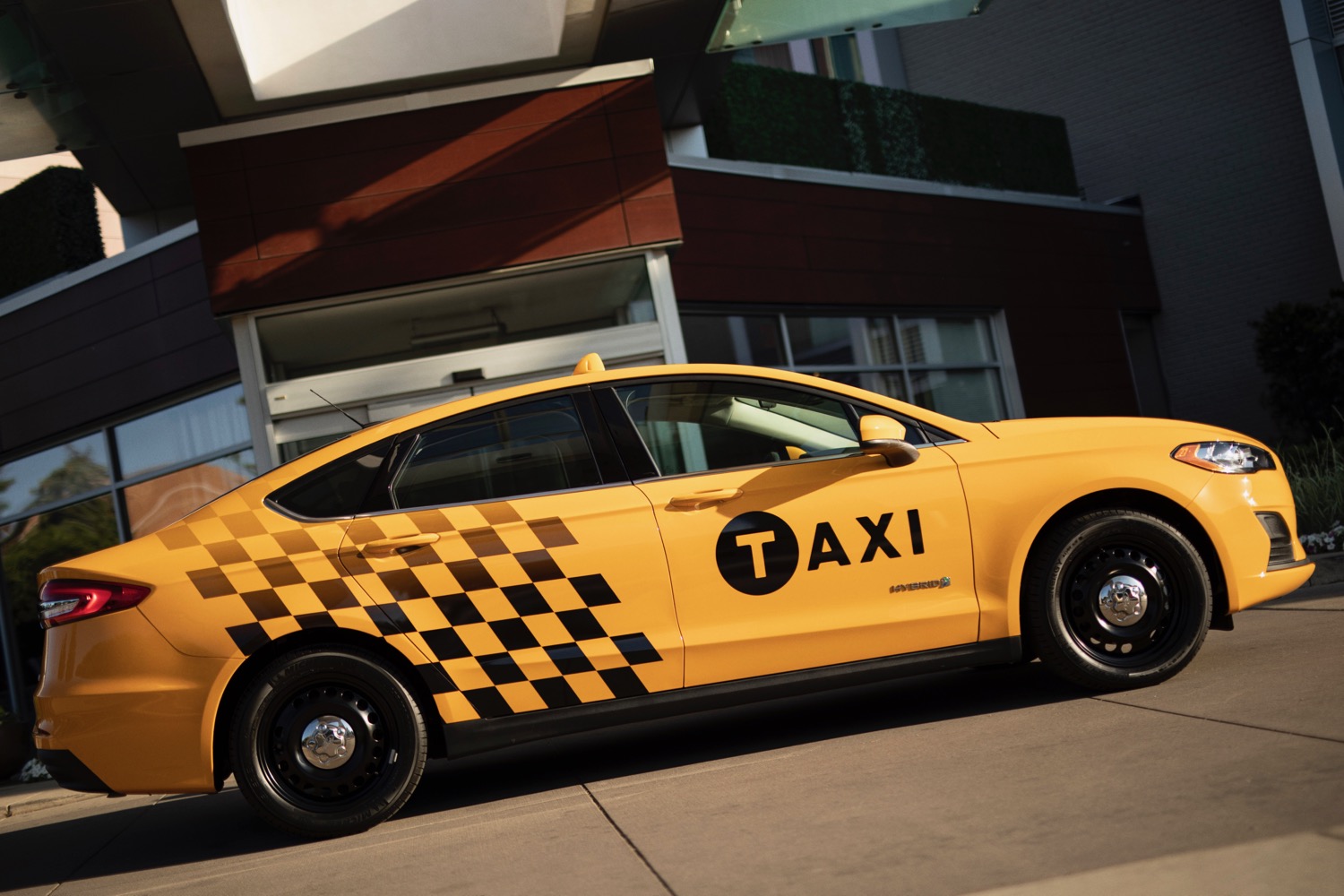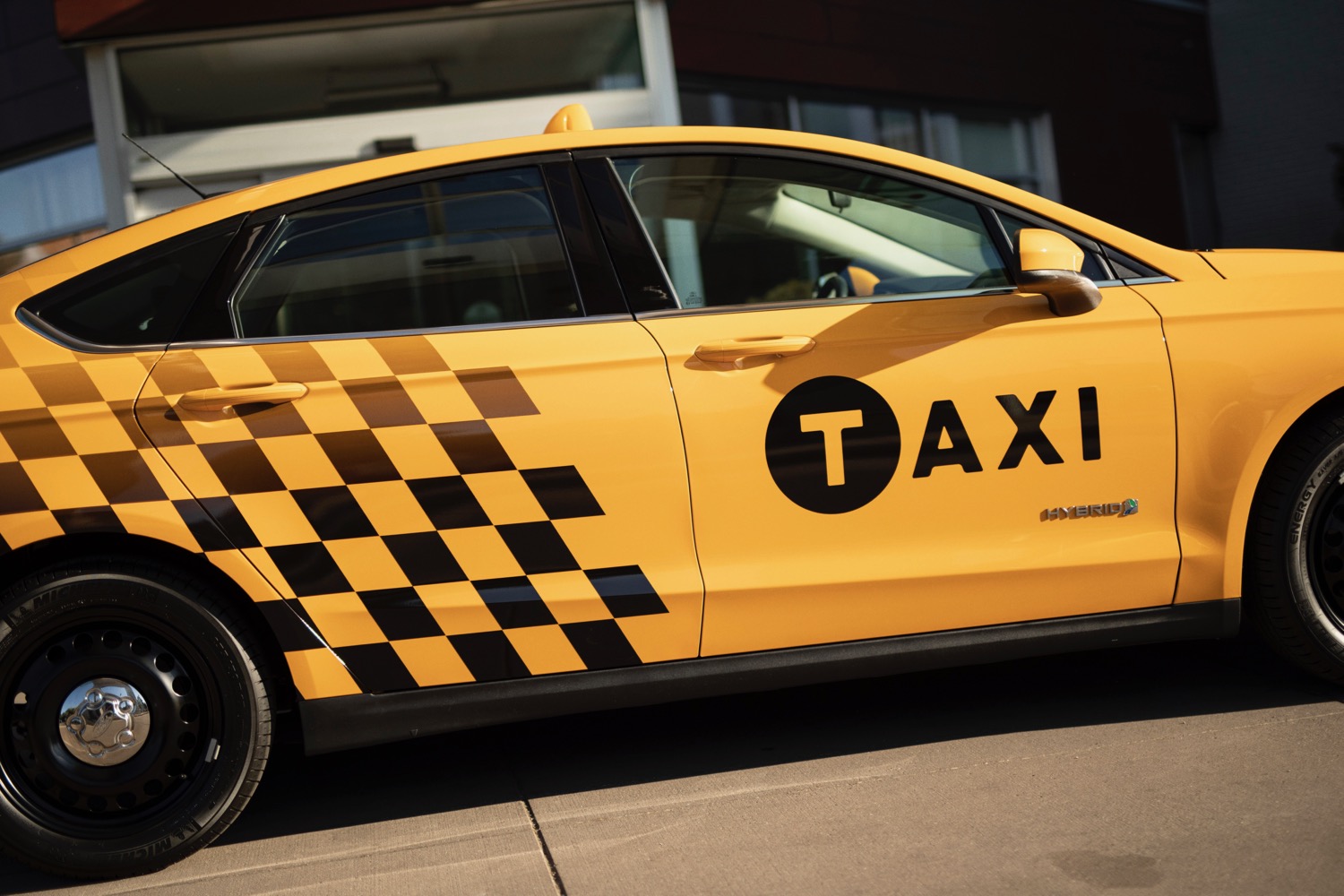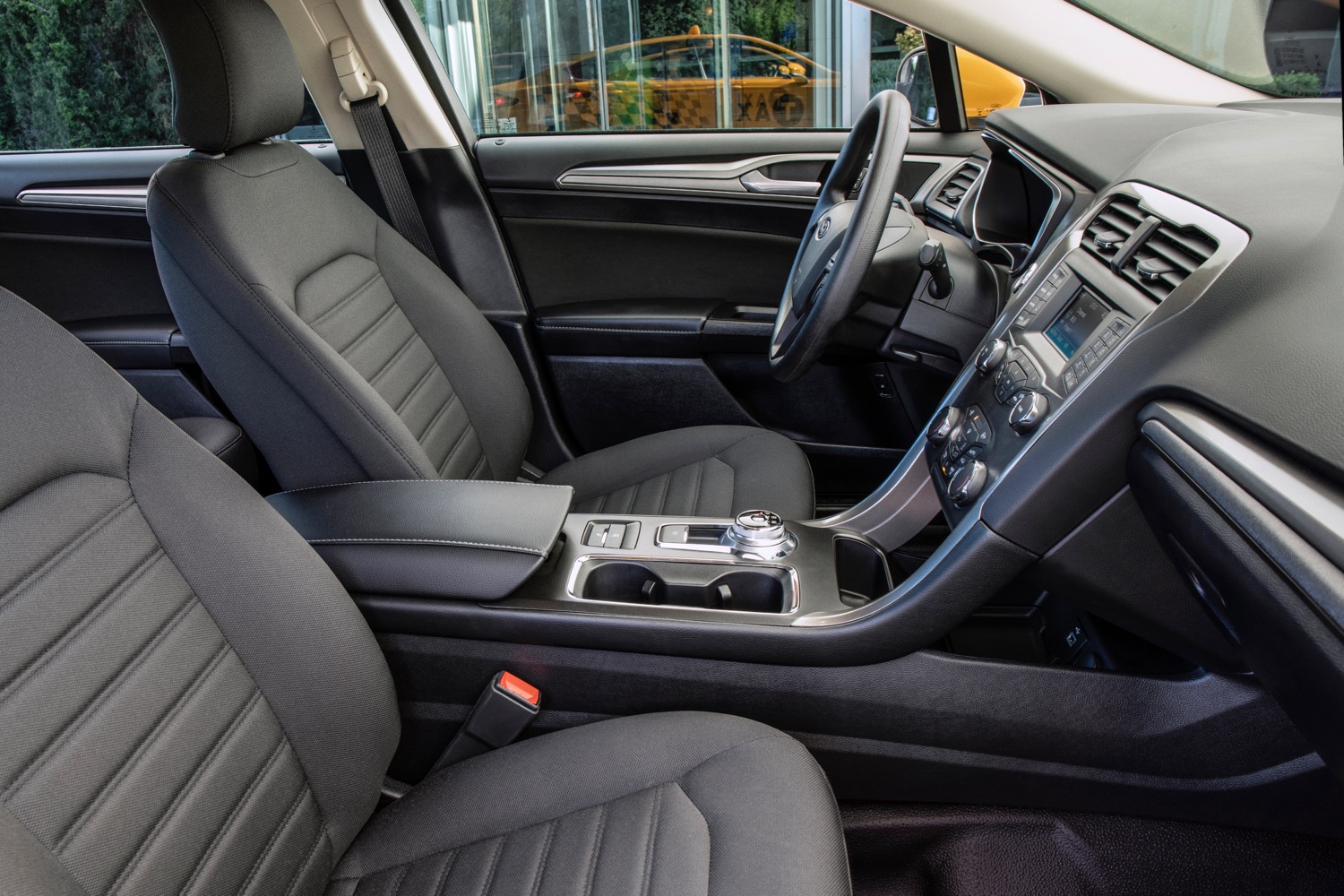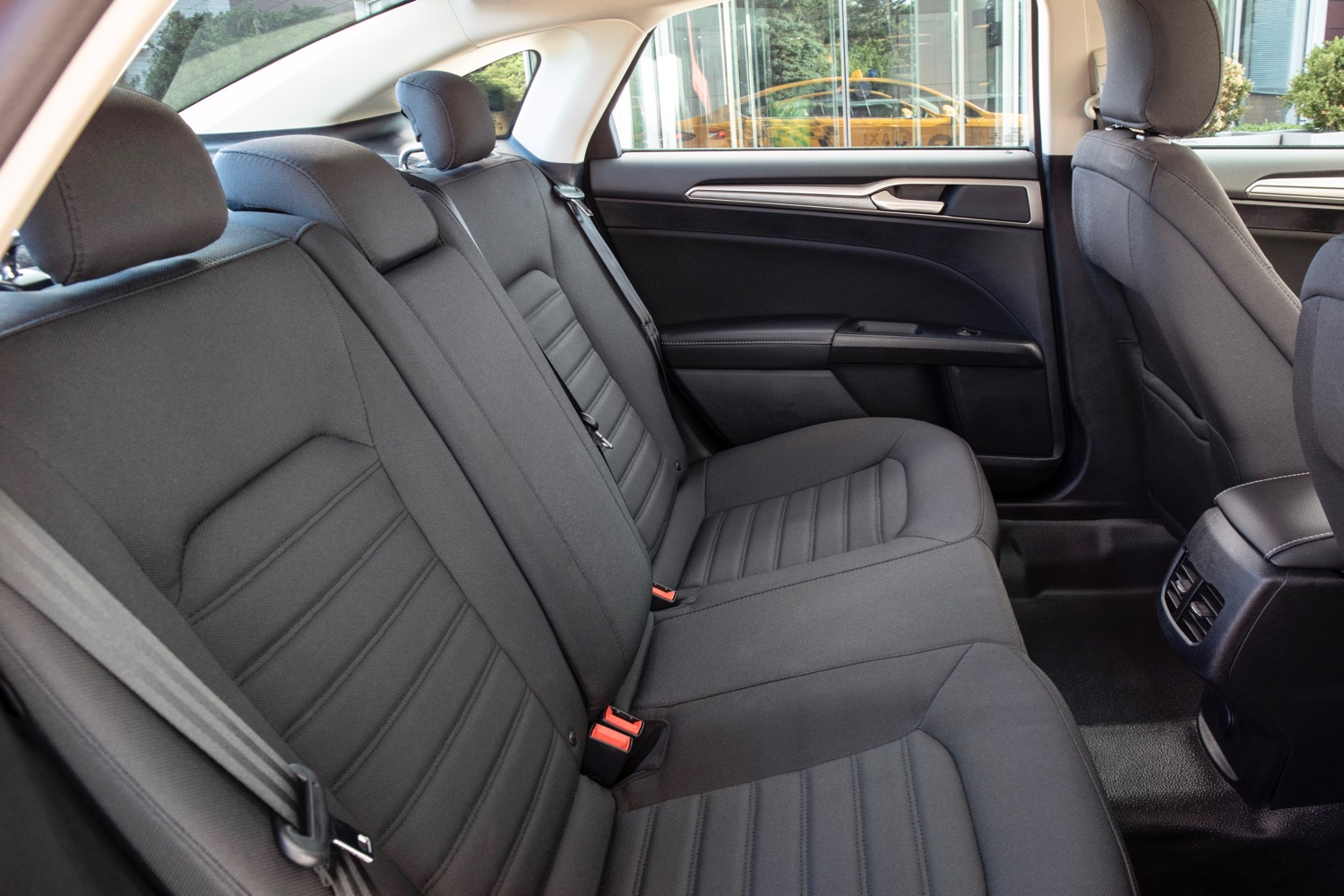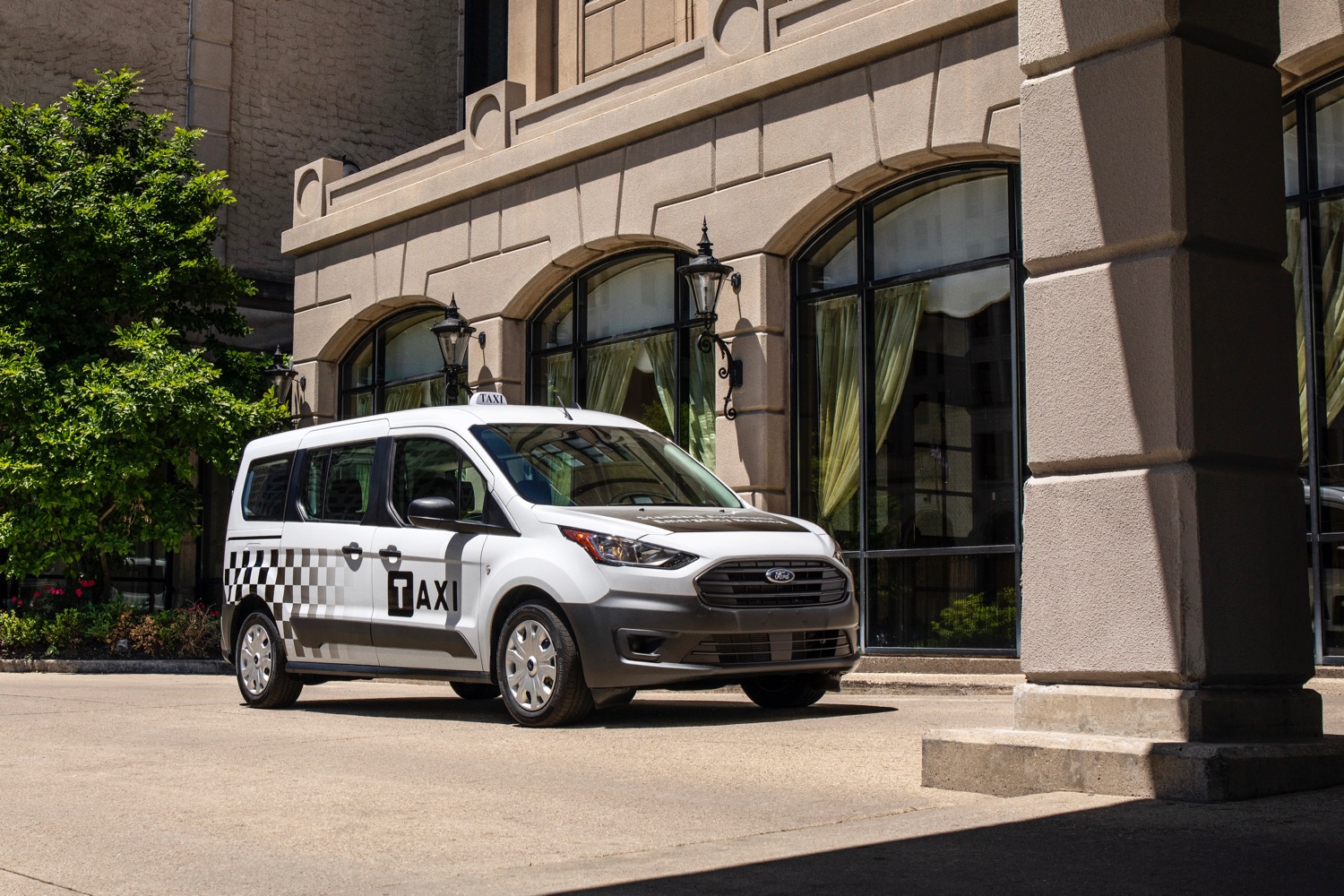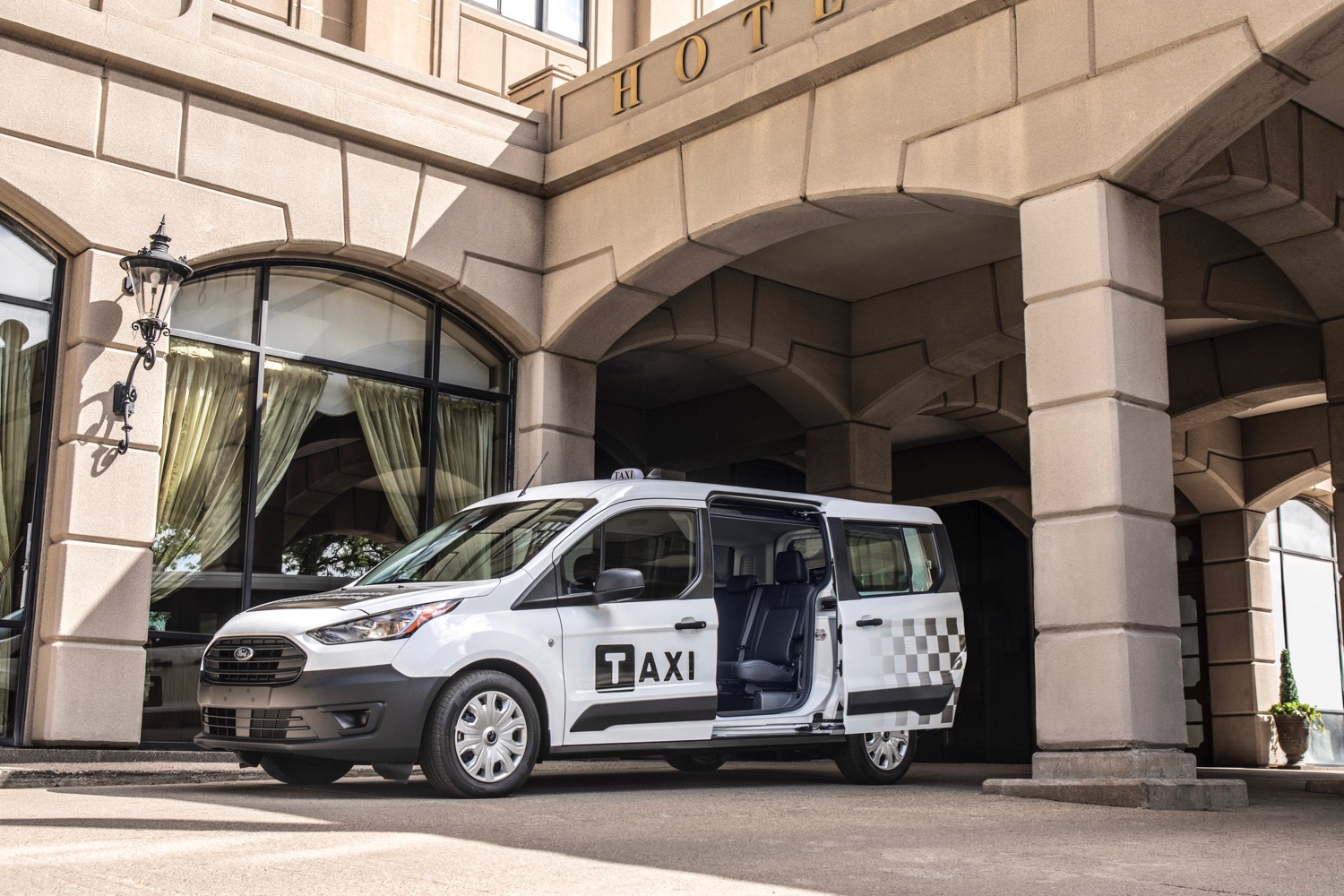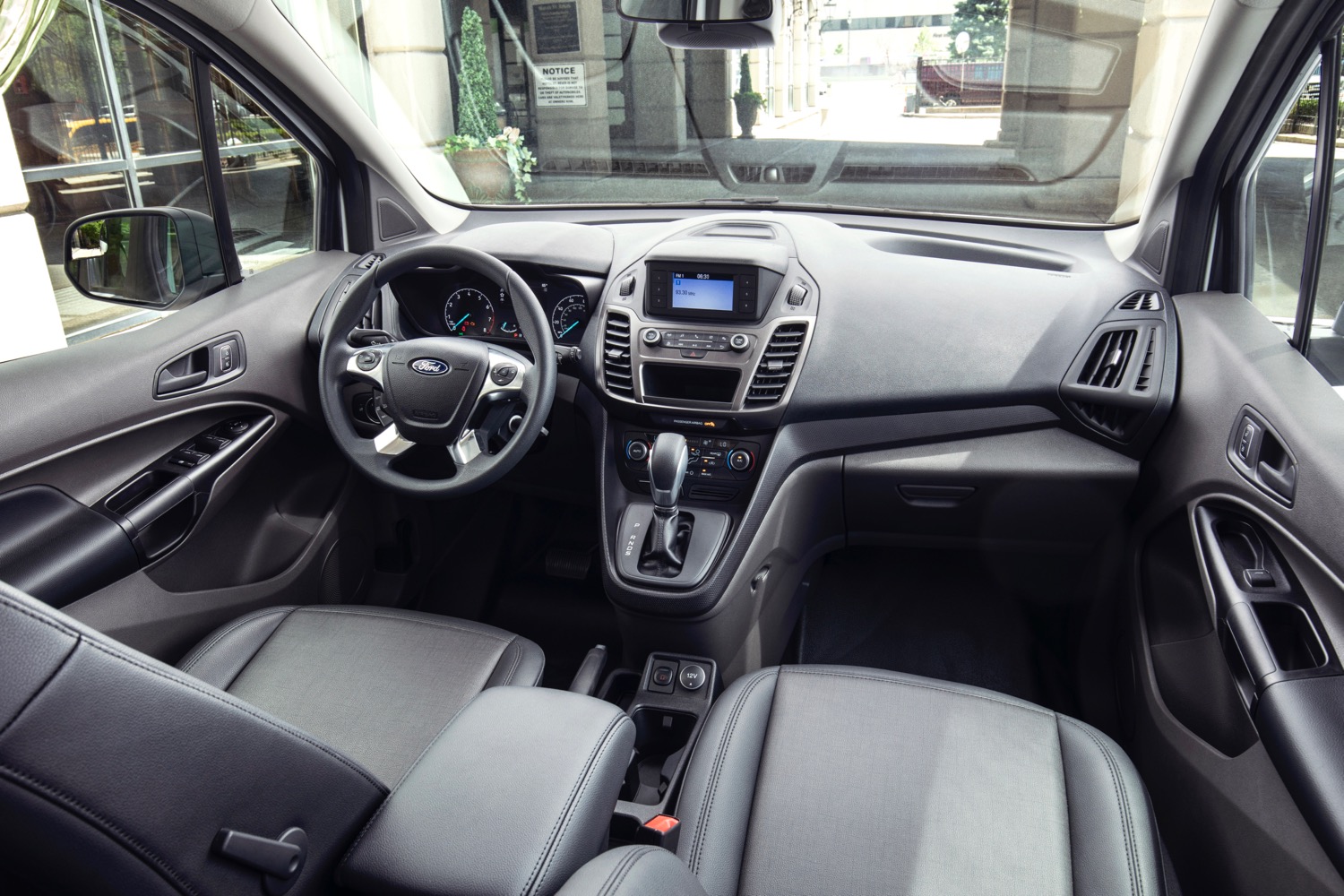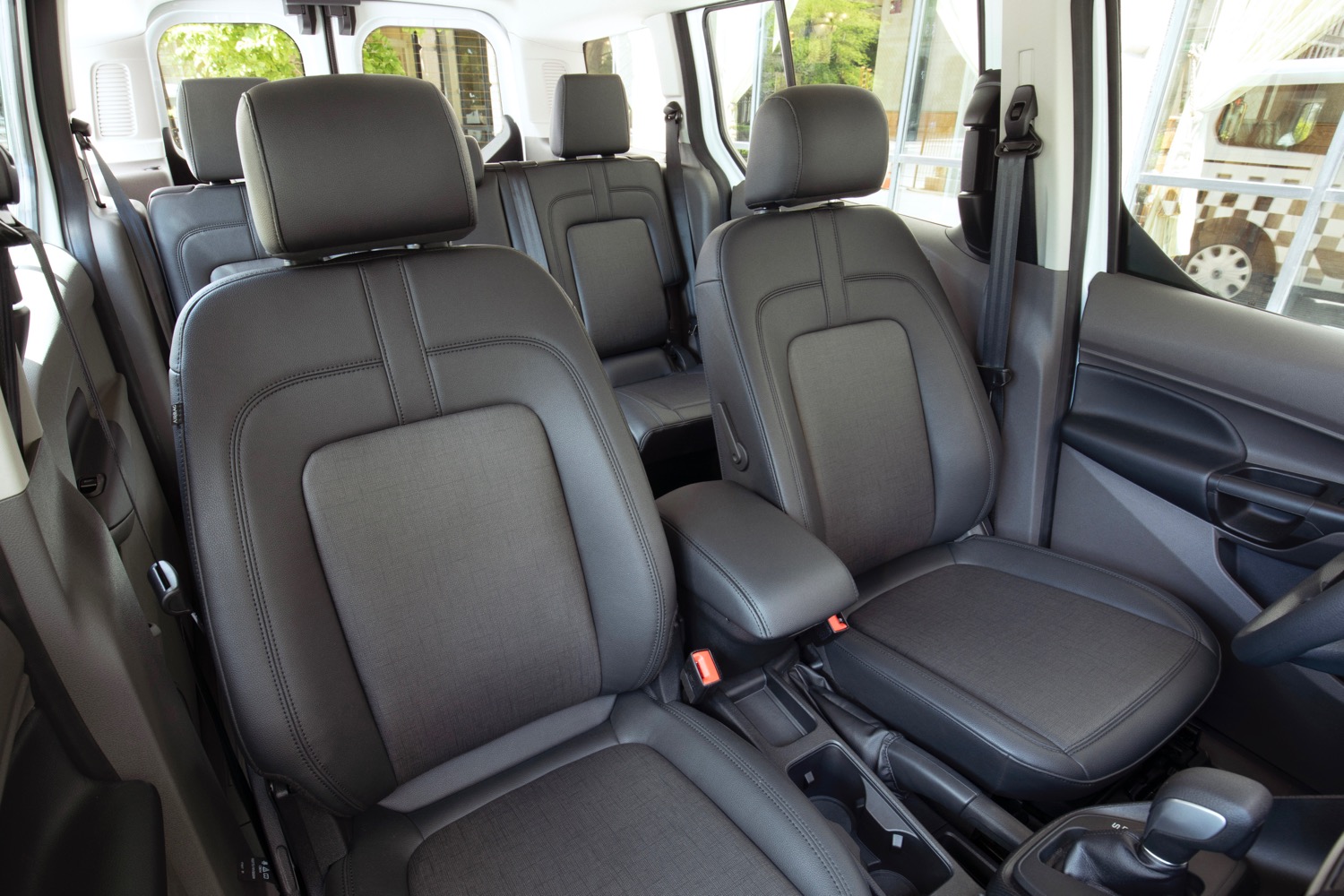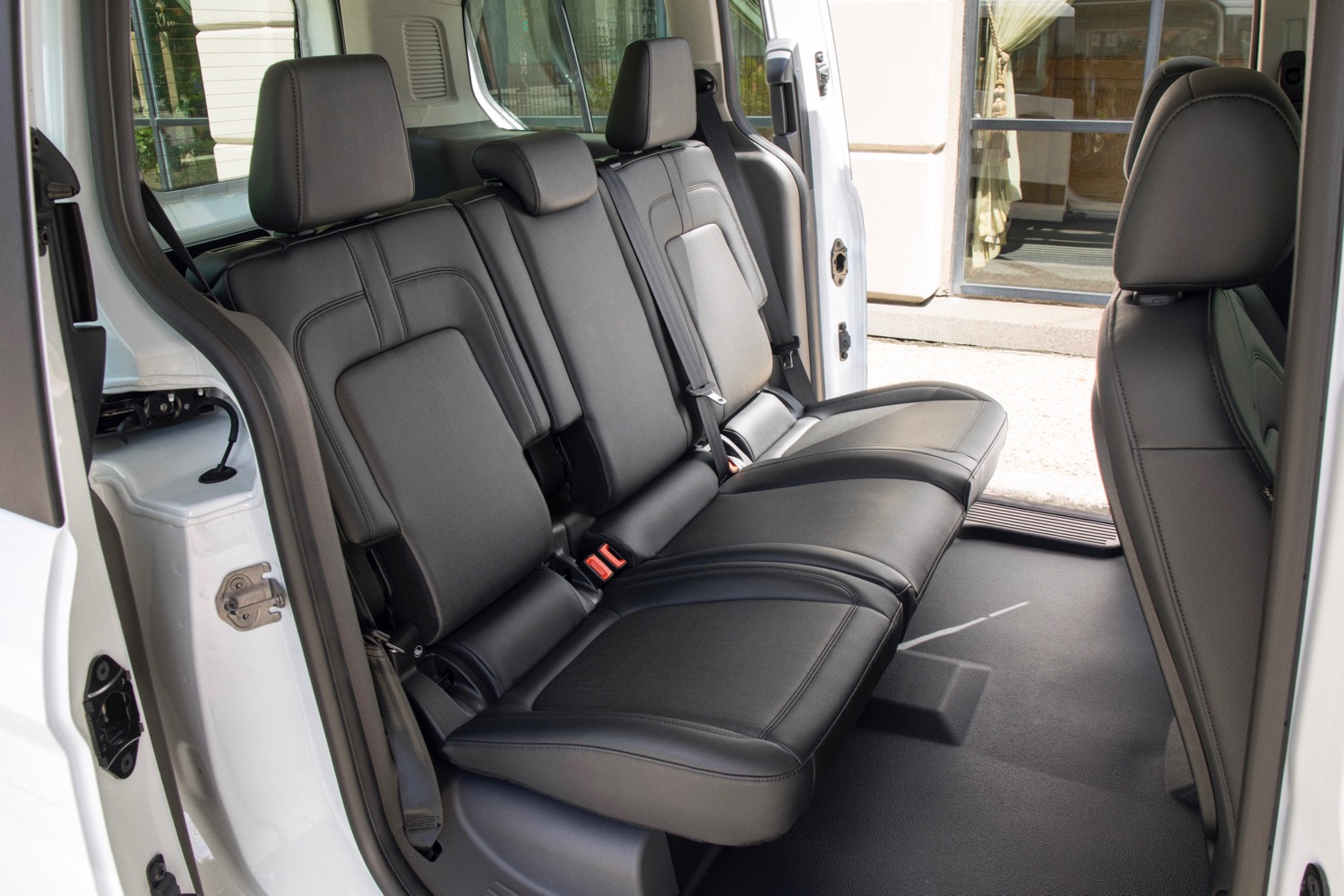Taxis make up a large portion of the vehicles on any city street, so any attempt to reduce transportation-related emissions has to include them. The now-defunct Ford Crown Victoria was a favorite of taxi drivers, but it was also a gas guzzler. Now Ford is offering a hybrid version of the Fusion sedan and a diesel version of the Transit Connect van as more fuel efficient successors to the Crown Vic.
Hybrid taxis are already popular, as evidenced by the number of Toyota Prius and Camry Hybrid cabs you’ll see navigating many city streets. Ford already sells its Fusion Hybrid to regular customers, so it’s surprising that it took so long to do an official taxi version. The Fusion Hybrid taxi gets a heavy-duty suspension from Ford’s Fusion Hybrid police car to better cope with the rigors of taxi duty. It also gets heavy-duty cloth or vinyl seating, a mounting point on the dashboard for a taxi meter, and steel wheels.
No apparent changes were made to the powertrain, which consists of a 2.0-liter Atkinson-cycle four-cylinder engine and electric motor making a total of 188 horsepower. Ford expects the taxi to get an EPA-rated 38 mpg combined (40 mpg city, 36 mpg highway), which is comparable to the Fusion Hybrid police car, but a bit less than the civilian version’s 42 mpg combined (43 mpg city, 41 mpg highway 2018-model-year rating). Given Ford’s disinterest in selling cars to individual buyers, the police and taxi versions are more important to the Fusion’s survival.
The Transit Connect van is already offered as a taxi, but Ford is adding a diesel engine option for the first time. It’s the same 1.5-liter four-cylinder, dubbed EcoBlue, added to the rest of the Transit Connect lineup for the 2019 model year. Like the civilian version, Ford expects the taxi to get an EPA highway rating of at least 30 mpg. Diesels are known to easily match or even surpass their EPA highway ratings, but it’s city driving that will make or break this taxi.
Hybrids are better suited to city driving because stop-and-go traffic offers plenty of opportunities to switch over to electric power. Ford brought a prototype Transit Connect hybrid taxi to the 2017 Detroit Auto Show, but hasn’t followed through with production plans. In the meantime, but the Transit Connect diesel and Fusion Hybrid taxis will go on sale by the end of the year. Ford is already taking orders for the Fusion, and plans to open Transit Connect order books soon.
